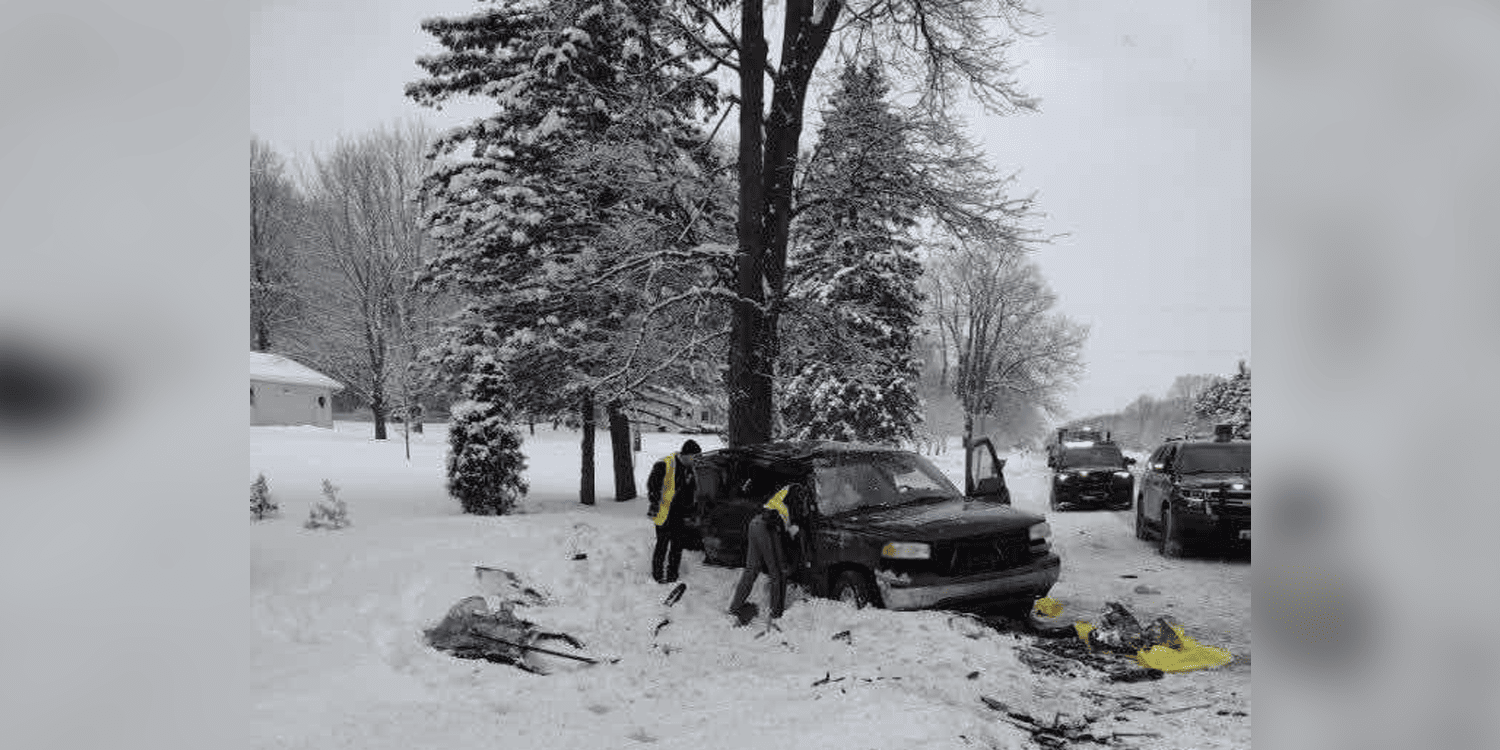
On the crisp morning of January 26, 2022, in Michigan, United States, Megan Tchakarov, along with her six-year-old daughter, Nora, her mother, Kim DeWind, and a three-year-old relative set out on a drive to see a relative. With Megan at the wheel of the GMC Yukon, they crossed a small bridge on a snow-covered back road. Just five minutes in, “we started sliding a little bit and losing control,” she recalled. Megan regained control of the SUV within a few seconds. “But then it just went totally out of control. And we went across the [center] line.”
A truck barreled toward the Yukon. “I remember initially as we’re drifting into that lane, you see your life flash before your eyes,” Megan said. “You see this big truck and just know you’re going to hit it.”
The two vehicles collided at 50 mph (80 km/h), nearly demolishing the vehicle’s passenger side where Kim and Nora sat. The impact would render Kim, Megan, and Nora unconscious.
Megan awoke, relatively unscathed aside from some bruises and scratches, to the sound of her daughter screaming. She noticed her mom lying outside of the vehicle in the snow. “I said, ‘Mom, are you OK?’ And she said, ‘I think so,’ with this really soft voice. Then it was obvious to me that she didn’t have a lot of time. She was already white, and she was swelling. She was just collapsed over, and her arms were all folded up, and her legs were folded underneath herself,” she said.
Trapped behind Kim’s seat was Nora, and it was apparent that she needed immediate help. “She just had this agonal breathing, and she touched me at one point, and she said, ‘Mama, sing to me.’ So, I started singing to her ‘Softly and Tenderly Jesus Is Calling,’ because that’s the song that she liked sung to her at bedtime. Just even for her asking me to sing to her, you just knew that her body was tired.”
“I’m going to take you down to say goodbye.”
Once Nora arrived in the intensive care unit at the Helen DeVos Children’s Hospital in Grand Rapids, she was outfitted with chest tubes. An emergency leg surgery was scheduled for later that day to repair a compound fracture (a fracture in which there is an open wound or break in the skin near the site of the broken bone) in her left leg. In addition, Nora’s arm, pelvis, and right ankle were all broken. She had a total of 13 fractures.
It wasn’t until Kim’s arrival at the level one trauma center in Spectrum Health Butterworth Hospital that the extreme severity of her injuries became more apparent to doctors. “She had a lot of deformities, which told me that she was involved in a very serious crash. Deformity on the right side, deformity in her body, and her blood pressure was what we call soft ... she was not responding very well,” Gaby Iskander, division chief of Acute Care Surgery and then-trauma medical director for Corewell Health, told the Herald in an interview.
Kim, 55, had sustained numerous internal injuries, which included a torn aorta as well as numerous broken bones. The entire right side of her chest had been crushed, causing a condition known as “flail chest,” in which a portion of the rib cage is separated from the rest of the chest wall. In Kim’s case, “her ribs were literally impacted to the point where they were tickling the side of the heart. She had completely destroyed her chest wall,” Alistair Chapman, a trauma surgeon and the current trauma medical director at Corewell Health, said. In addition, her lungs had collapsed, her mid and lower spine had been damaged, her liver had been lacerated, her right arm was shattered, and she had broken her collarbone, sternum, and shoulder blade.
When Kim's husband, Jeff, arrived at the hospital, a nurse gave him grim news about his wife. “She said, ‘Kim’s coded, and I’m going to take you down to say goodbye.’”
“The room was full of people,” Jeff said. “You couldn’t even get in. The nurse told him, ‘I can ask some people to move.’ I said, ‘Don’t. Just let them try [to resuscitate].’” Doctors did chest compressions for 10 minutes. “All of a sudden, I heard somebody holler and everybody started rushing out the door, and somebody said as they came past, ‘We got a pulse. We’re going to try.’ And they disappeared down the hall.”
The vascular surgery team began an hours-long emergency surgery to patch Kim’s aorta. The operation was a success. Almost immediately after the patch was placed, blood flow into the chest tubes slowed, and Kim’s vitals improved. One of the surgeons met with Jeff after the surgery was finished. “He said, ‘Right now, she’s very critical but stable. We have a little hope. We’re not out of the woods. The next 48 hours will be very critical.’”
A larger question loomed over Kim’s entire recovery, however. An early MRI showed that the massive blood loss had caused her to have several strokes. “If she lives,” the doctor told Jeff, “I would expect there to be some substantial brain damage.”
“I was praying,” said Jeff, who was fast losing hope. “A lot of people were starting to text me and call me to say that they were praying.”
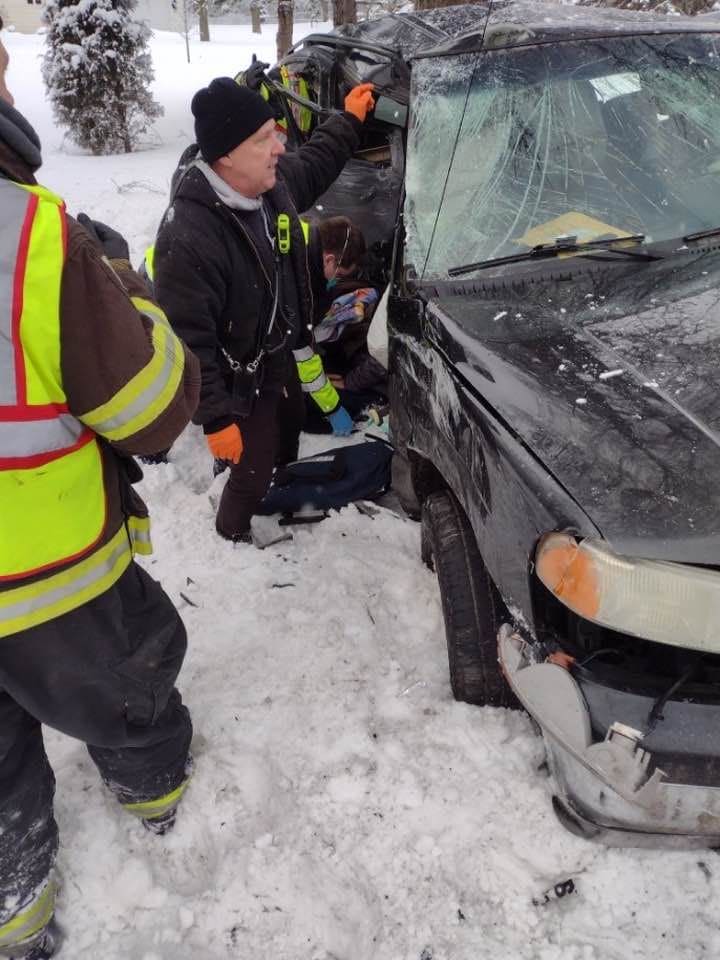
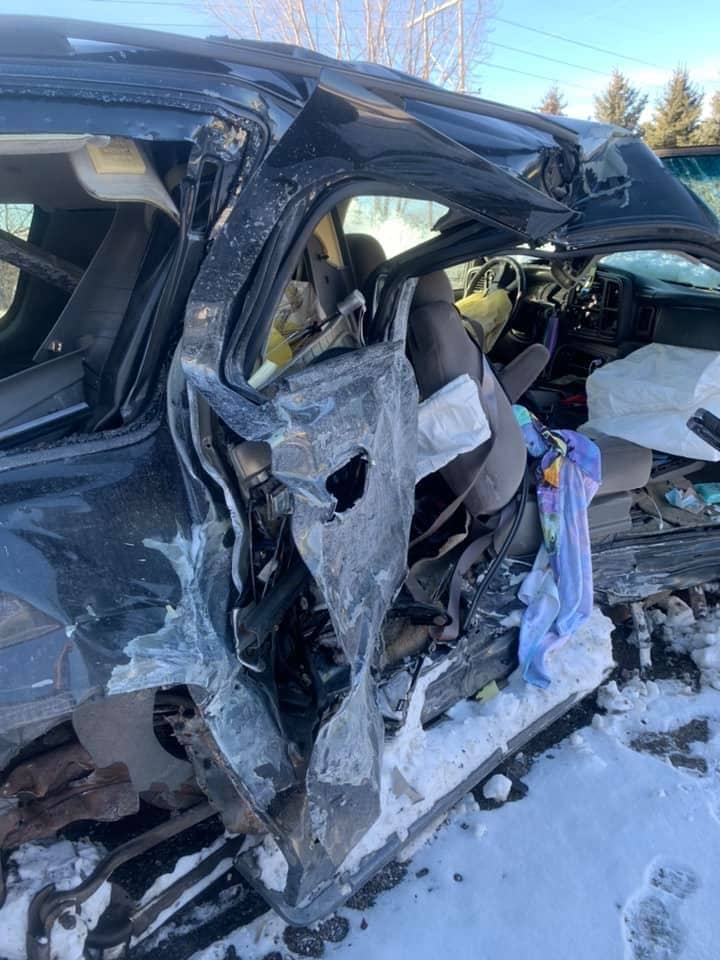
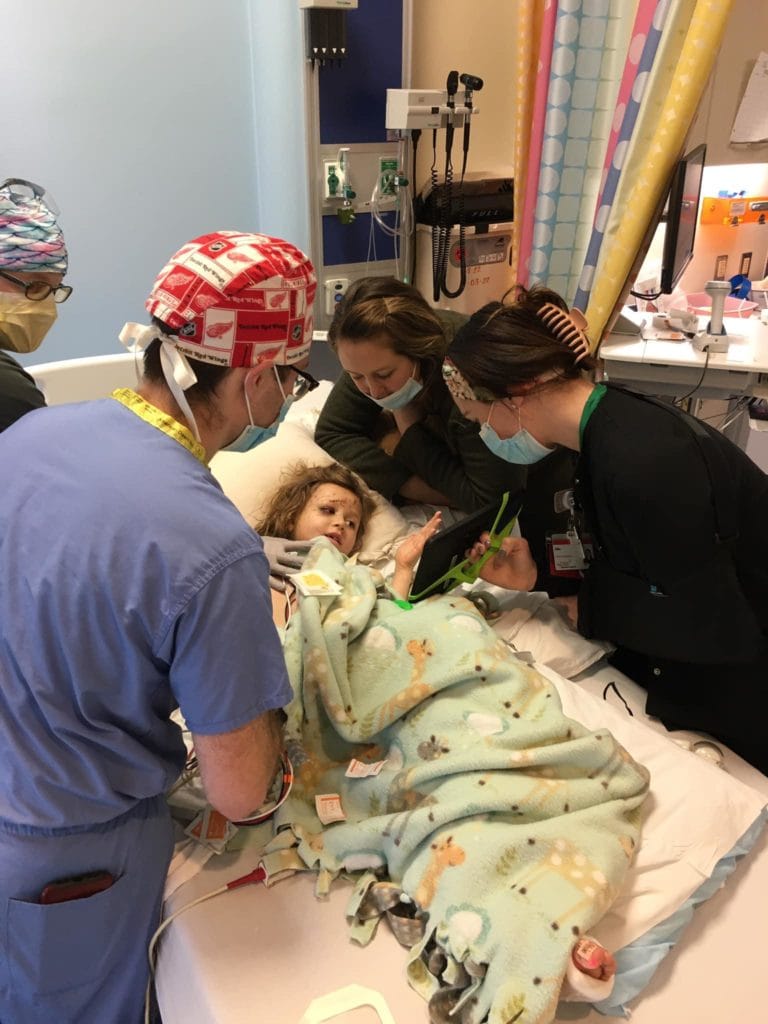

A Distressing Outlook
Devon Fenner, one of Kim’s daughters, was at her home in Cadillac, Michigan, when she started getting bombarded with phone calls and text messages. She called her dad to figure out what exactly had happened. “I said, ‘Dad, how bad?’ And he said, ‘You need to get here fast.’”
Devon wrote about the accident on Facebook on the following day, January 27. “We are praying for a miracle for my mom,” she said. “My family is shaken, scared, and hurting. But we are clinging to each other and to our Heavenly Father who we know is ultimately in control. We long for your prayers, and we are praying for God’s will.”
Doctors repaired Kim’s broken arm that morning. Then, on the third day after the accident had occurred, January 28, she underwent a complex operation — chest wall reconstruction. Chapman, an expert in this kind of surgery, guided the operation. “This is not a low-risk injury by any means,” he said. Titanium plates and screws are used to return the chest wall into “a normal anatomical alignment.” In other words, doctors replaced her irreparably broken ribs with titanium plates and screws.
The surgery lasted eight hours. Chapman repaired 15 rib fractures using 12 titanium plates and 94 screws — which he said is the most hardware he’s ever used in a chest wall repair.
Doctors decided that her remaining injuries would be best treated non-surgically. She was placed in a medically induced coma in the ICU, battling a low-grade fever.
On the fourth day — January 29 — they decided to try to wake her up. All the medications were removed.
There was no response.
This repeated for two days. By the sixth day, January 31, doctors were no longer trying to keep her in a coma. She just was not waking up.
Iskander pegged her chance of survival as “very low.” “I don’t like to say ‘zero’ because nobody can predict,” he said, “but her chance of survival was extremely low, and that’s what I told her husband.”
A Worldwide Community Prays
Devon’s initial Facebook post spread quickly. Within a couple days, it received over 1,300 interactions, including 207 shares, potentially reaching thousands. Devon’s entire church, the Cadillac 13th Street church, prayed. Kim’s home church, the Holland church, supported the family through meals and toys for the kids. “Other than to call out to God, you really don’t have the words or know what to say. Just to know that you have people that are praying for you, that’s really big,” Megan said.
“There were people in every state of this country praying. There were people outside of this country praying. This story went everywhere,” Devon said. “And there were people who we didn’t know sending cards and letters and checks in the mail and toys for the kids to play with to pass the time. And the community, people who were not even part of the Adventist Church, were bringing meals to the house, and neighbors were dropping by and feeding my dad’s cattle.”
On January 29, a frigid Sabbath afternoon, a group of family and friends gathered outside Helen DeVos Children’s Hospital to hold a prayer vigil. They prayed for 90 minutes, asking for divine intervention. The same evening, The Farmhouse restaurant in Zeeland, where Kim worked part-time, shut down and held a prayer meeting in their back room.
The Turning Point
Nora was released from the ICU on January 31, just five days after the accident. She was transferred to Mary Free Bed Rehabilitation Hospital, where she underwent physical therapy and other recuperative treatments.
A turning point for Kim also came on this day.
Megan was able to see her mom for the first time since the accident. “My whole body was cold and numb when I walked into that room for the first time, because she was so swollen, and every part of her body was covered or connected to machines except for just this little portion of her face. You look at her and you would just think that it’s the end. You don’t see how she could ever come back from what she’d been put through,” she said.
“I said, ‘Mom, we understand if you don’t want to fight this battle. But I want to know, do you want to fight it? We understand if you just want to go to sleep and we’ll see you when Jesus comes, but I want to know, do you want to fight this battle?’”
There was no response. Megan asked again. “Mom, do you even want to fight to live?”
Kim responded by nodding, with tears streaming down her face.
Megan texted the family. “She’s in there,” she said. “She heard me, and she’s in there.”
Astonishingly, Kim only spent 15 days at Spectrum Health Butterworth, 13 of which were in the ICU. Doctors had expected her to remain there for at least a month.
Kim was anxious to return home. Doctors, however, put a damper on those hopes. First, she had to be able to walk, sit on the end of the bed, begin physical therapy, and come off the ventilator.
On February 11, she did just that and was transferred to Mary Free Bed Rehabilitation Hospital in an ambulance. Once she arrived, she gave her doctors an ultimatum. “They said, ‘Kim, be prepared to be here for a good four weeks, maybe longer.’ And then I told them, ‘No, I’m going home in two weeks.’”
Kim resolved to give it all she had with a positive attitude. “That first night, being all alone, I prayed a lot so I wouldn’t be afraid. ‘Help me with pain, help me with rest, be with my family.’ I prayed so much. I would just fall asleep praying. I’d wake up, I’d pray some more, fall asleep, and pray again.” As she engaged in an aggressive physical therapy regimen, she dove deep into the Bible. “I just knew that I needed to stay in a good frame of mind. I thought, ‘You need to do this right now, or this will be a very long, depressing pity party.’”
After she was discharged from Mary Free Bed — meeting her two-week ultimatum — she met with her Spectrum Health Butterworth medical team. It dawned on her how close she came to dying. “That’s the first time that I feel like I really understood the severity of my injuries,” she noted. “Every one of them said, ‘You’re a miracle,’ or ‘A higher power was involved.’”



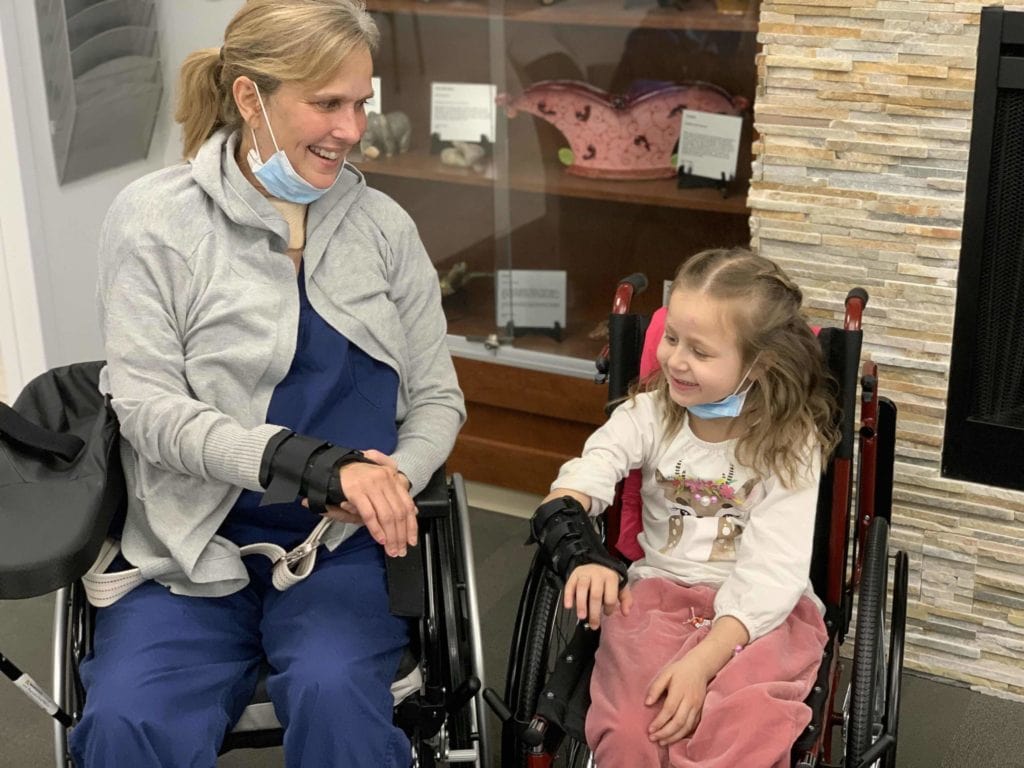

An Ongoing Recovery
More than a year later, Kim continues to recover from the injuries she sustained on that fateful January morning. She is also coping with nerve pain, a side effect of the hardware in her chest. Nevertheless, she’s been told to expect a two-year recovery period. “I’m still in physical therapy once a week. I am making progress.”
Megan and Nora returned home to Montana by mid-February. The first few months were hard, though, and Nora struggled to cope with the trauma she experienced during the accident. “She went from a perfectly good sound sleeper at six years old to being a kid that woke up all night long,” Megan said. “Every time she moved, she would be in pain.”
She has completely recovered and even returned to downhill skiing during the 2023 ski season.
It’s helped Megan to realize the fragility of life. “Just the experience of holding your child in your arms knowing that it may be your last moments with your child ... you realize what a gift life is, and I thank God every day for my kids.”
For Devon, the experience has propelled her through a multitude of spiritual highs and lows. “I do have a long way to go. I’ve watched my mom say, ‘If I had to go through all this so that we’re all in heaven together, it was worth it.’ We’re very human, but I am definitely in awe of how amazing God is. It stripped down everything that I struggle with ... and it brought everything into perspective in a very deep way.”
The healing has also encompassed Kim’s spirituality, which she credits as pivotal to her recovery. “I experienced God personally, and He literally saved my life and my granddaughter’s life. We’re sinners, and He saved our lives.”
She remembers hearing about how her grandchildren gathered in her bedroom while she was still recovering in the hospital, praying for divine healing. “I hope my grandkids don’t forget that. I hope my children don’t forget that. I hope they don’t forget that they pleaded with God, and He heard them.”
Kim has decided to share her story by speaking in churches and has already retold the story in several churches. “When I share this story, I hope that we can just put the blame where it belongs. It’s the devil. It’s the enemy. It’s sin. And this is just one little result on his planet. I hope God helps me stay faithful and strong and steer the story.”
The original version of this story was posted on Lake Union Herald.